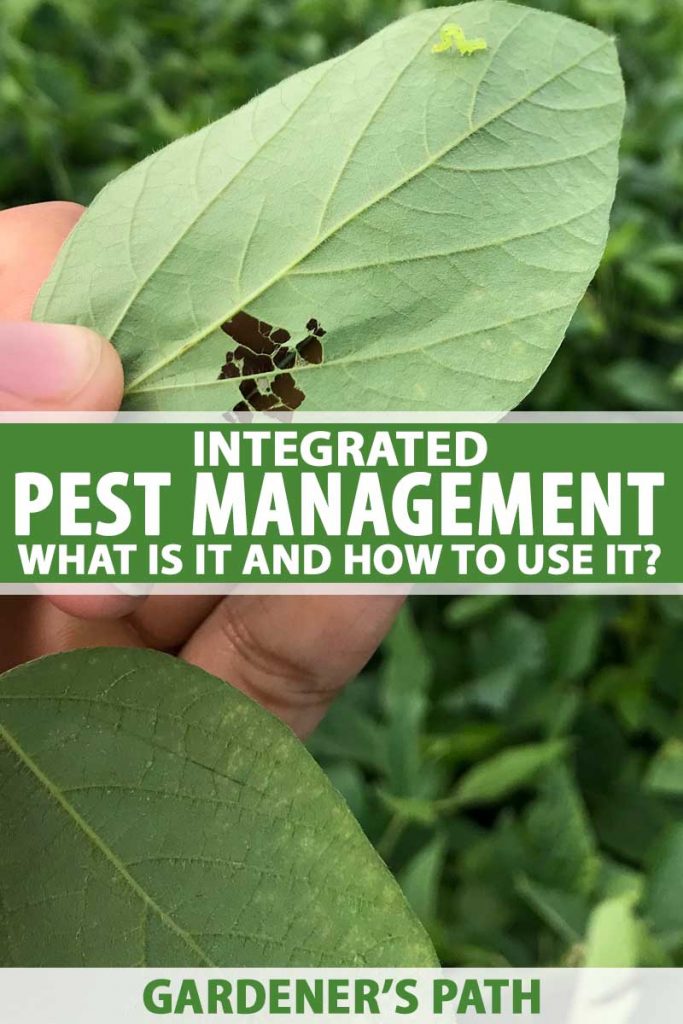I’m sure I’m not the only one that has wished that I had a few extra pairs of helping hands in the garden from time to time.

We link to vendors to help you find relevant products. If you buy from one of our links, we may earn a commission.
Luckily ‘Integrated Pest Management’ (IPM) offers just that – except in this case, the helping hands come from a perhaps somewhat unlikely place.
What You’ll Learn
What Is Integrated Pest Management?
IPM is an ecosystem-focused style of management that allows you to manage your pests more sustainably, helping you to use less harmful pesticides whilst having the added bonus of helping you to get to know our gardens more intimately.
Through the intelligent incorporation of biological controls, cultural practices, and habitat manipulation, this type of management allows you to understand your ecosystem as whole and the role your pests play within it, thus working to control pests in the long term.
So where do the helping hands come into things, you might be asking? Well, IPM is not just about understanding your foes, but also getting to know your friends – which critters, from insects to microbes, can actually work to help you in your garden, and how you can encourage these.
The key word here is balance. Every technique that you use works towards striking just the right balance in your ecosystem so that the pests and their prey are in harmony, keeping pests at an acceptable level, your whole system healthy and happy, and, in the process, saving you precious time and energy.
In this way, you get biology to do most of the work for you. Sounds ideal? Read on to find out more…
So How Does IPM Work?
IPM is not just one single pest control. It doesn’t offer any magical silver bullet solutions, but is rather a combined effort of many different techniques. So, where to start?
People tend to name anywhere up to eight steps in IPM implementation, but generally speaking, this can be boiled down to four main steps. These are:
1. Identifying Action Levels
How do you know at what point a slight nuisance becomes a problem? Action levels are designed to help show exactly the point at which the scale has been tipped, the balance is off, and action must be taken.
2. Monitoring
To be able to start playing, you need to know what you’ve got to play with. Regular monitoring, including site inspections and trapping, helps you to understand exactly what you’ve got in your land.

Keeping a record of observations such as pest identification, population size, distribution, and so on helps to establish trends and patterns over time.
This might sound scarier than it is – there are heaps of guides on hand to help, such as our own handy guide to identifying the most common beneficial insects and other helpful invertebrates, this handy ‘natural enemies’ gallery from the University of California , or these handy pocket guides for weed identification.
3. Prevention
Prevention is the name of the game in IPM. The core idea of this management practice is to stop a pest or disease in its tracks before it even becomes a problem. We’ll talk more about how to do this, and techniques that we can incorporate into our systems, below.
4. Curative Action
Sometimes, try as we might, with all the best will in the world, something gets out of hand. So what to do then when your pests have thwarted your best control efforts?
Well, once past the point of prevention, IPM programs then offer a hierarchy of appropriate control method recommendations.
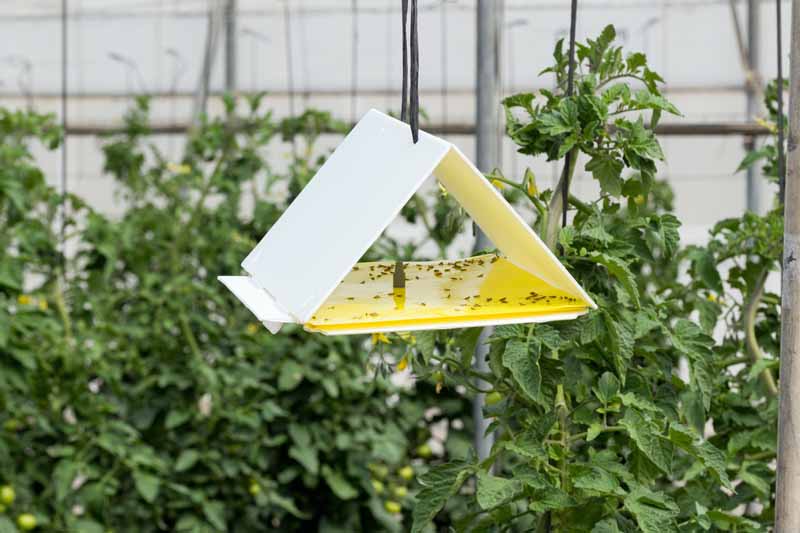
Effective, less risky pest controls are prioritized first, including things like pheromones to disrupt pest mating, or mechanical controls, such as trapping or weeding.
If that doesn’t succeed, additional, harsher pest control methods can be employed, such as targeted spraying of pesticides, although this is very much a last resort option.
Prevention Techniques
So, things are going well, you’ve identified your action levels, had a good poke around in your soil and identified your friends and your foes. You have a good idea of what’s going on, and now you want to get cracking with some preventative techniques. So, what does this look like in practice?
There are 4 main preventative methods: biological, physical, cultural, and chemical controls.
Biological Controls
By this, we mean playing nature at her own game. In biological control, we use beneficial predatory organisms, be that animals or insects, to help keep pest levels at a controllable level and restore the natural ecological balance.
This works with the opposite philosophy to pesticides – instead of trying to eradicate everything, leaving a big biological niche free (which nature will always try to refill with a vengeance) biological control techniques instead work to keep pests at a manageable level. This way, there is a constant food supply for our predatory friends and only a low, tolerable level of plant damage.
Biological controls can be broadly broken down into two main categories:
1. Augmentation
This means physically putting helpful predatory species in place where you want them. This could be moving bugs and insects you find elsewhere in your land to where you want them.
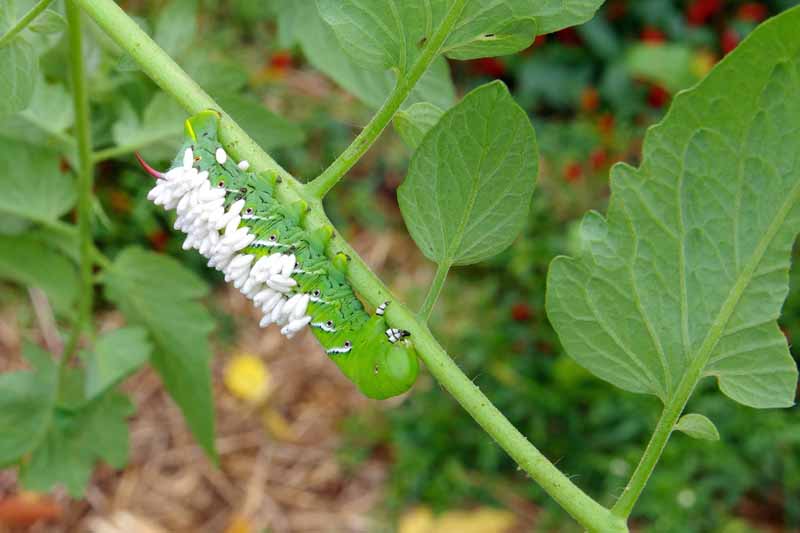
Alternatively, as incredible as it may seem, you can now order boxes of beneficial organisms to release on your land or in your greenhouse, such as ladybugs to work against an infestation of aphids. This is done in the hope that this will establish a permanent level of predators in your outdoor environment.
2. Conservation/Encouragement
This means working with what you’ve already got. Natural enemies are often already in place, but sometimes need a little encouragement.
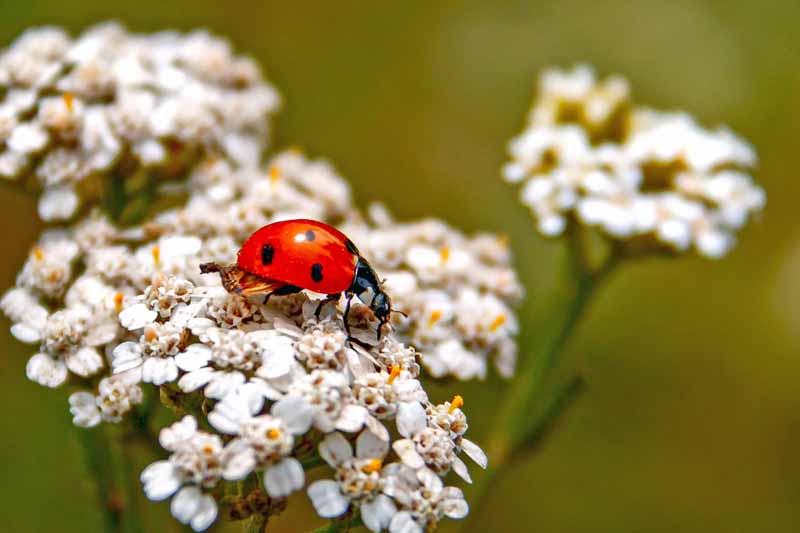
This includes planting favorable habitats for these little helpers, such as their favorite plants to eat, or providing shelter for them to make sure they have a nice, cozy home just where you want them.
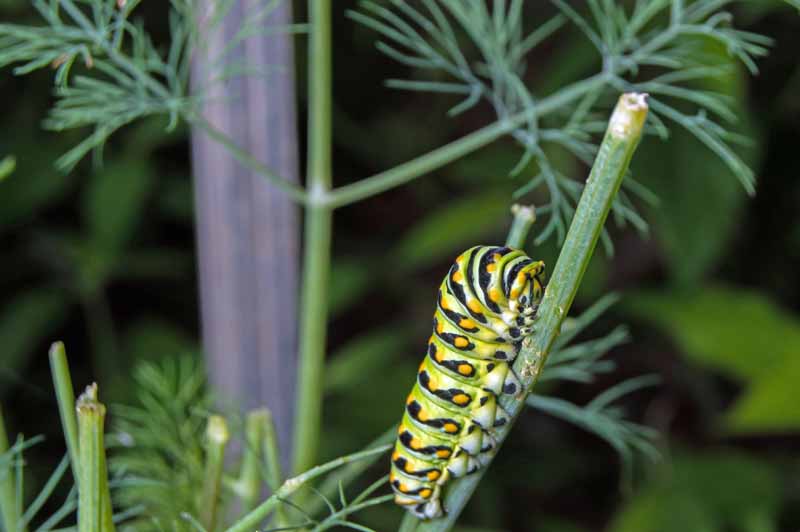
Planting trap crops near your main crops that you intend to harvest is another method of encouragement. The trick is to identify the vegetation that herbivorous insects prefer to munch on rather than the plants that you want to protect.
Physical Controls
Also sometimes referred to as “mechanical” control, this includes physically removing pests from your garden, either through crushing or killing them, or through things like barriers, traps, mowing, and tillage.

Physical controls obviously mean different things for different pests.
For diseases, this means more pruning and removal of diseased plants.

For insects, this includes hand removal of mature insects, larvae, and pupae, which is ideal when the pest is obvious and easily identifiable. This can also be done using mechanical sweeping, and insect trapping.
Physical control also includes hand weeding, mowing, and mechanical cultivation to control weeds.
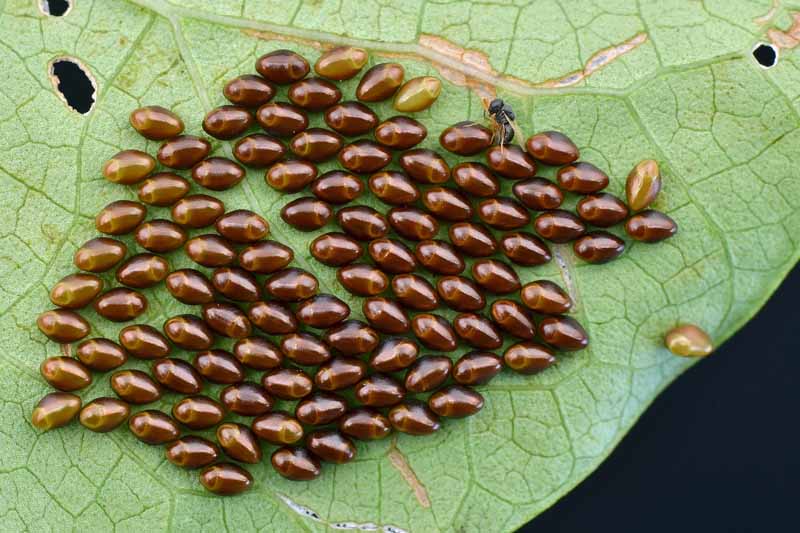
Perhaps you’re thinking that this won’t have much of an effect on your pests. But this can often be just enough to get on top of a problem before it becomes established, with the added bonus that it leaves just enough pests to sustain their predator population, but not enough to cause huge pest problems.
Chemical Controls
IPM very much works with the goal to reduce chemical inputs as much as possible, but they can still be helpful from time to time if things really get out of hand.
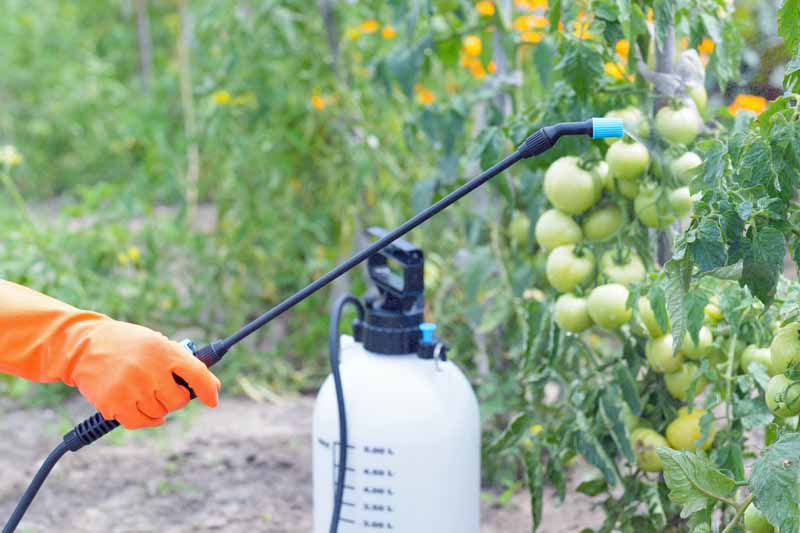
Pesticides can therefore be used in exceptional circumstances, although great care should be taken to select exactly the right pesticide for your problem and to apply it safely.
As much as possible, the most precise pesticides should be picked that target only your pest, and cause the least harm possible for the surrounding environment.
Something that is important to bear in mind is to make sure it’s not a pesticide that inadvertently kills off the organisms that you are trying to encourage.
Cultural Controls
Cultural controls are all things that you can do when you design and work in your system. This includes things like:
- Choosing the appropriate variety of plant adapted for your growing conditions (so that they have the best chance of thriving without help).
- Having an appropriate watering schedule (over-watering can cause fungal problems, whereas under-watering can weaken your plants).
- Practicing good hygiene habits (e.g. always using clean tools).
- Practicing smart crop rotation.
A lot of this seems like common sense, and that’s because it mostly is – but it’s still a crucial pillar of IPM.
Oh, We Get By with a Little Help from Our Friends
Clearly, the Beatles weren’t just talking about people in their well known song – plants are exactly the same! And IPM lets you find new friends to play with and lend you a helping hand in your garden, all whilst saving you time and energy, and reducing pesticide use.
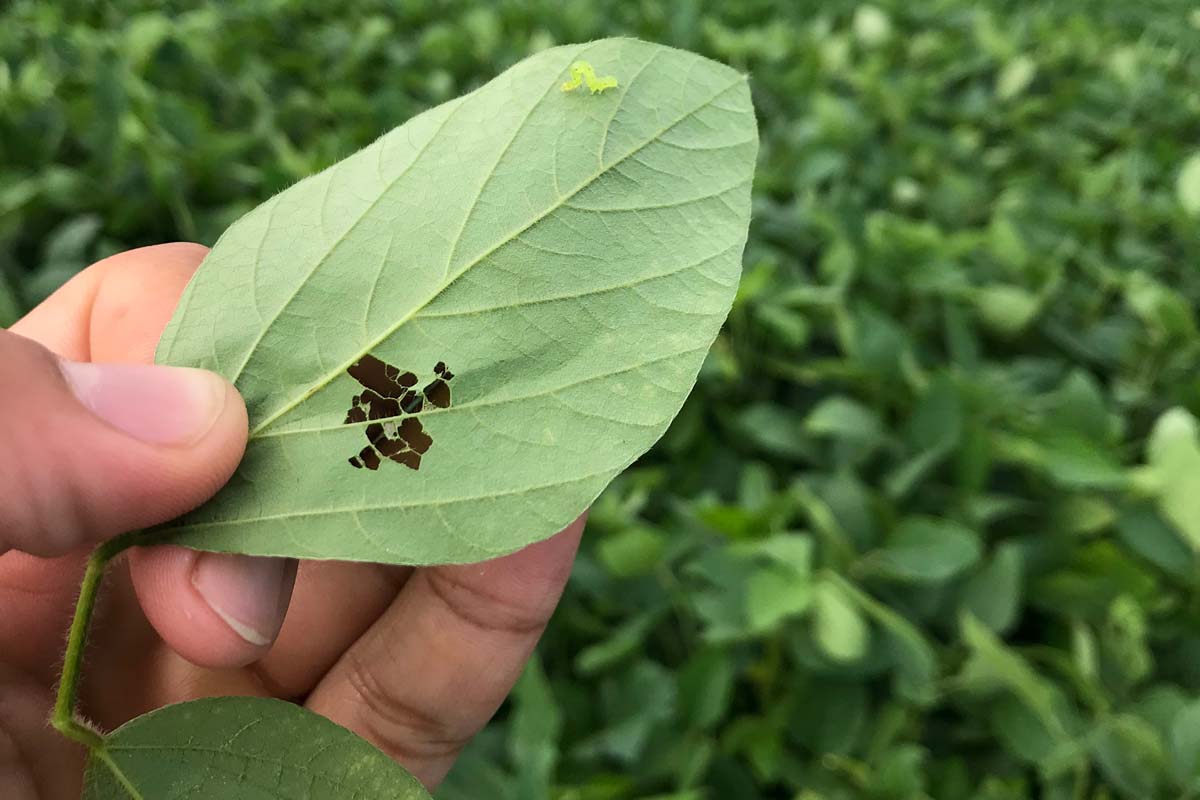
With the combination of preventative control techniques, plus a little patience, IPM can help your garden to come alive and thrive!
For more information on the finer details of this subject and related reading, be sure to check out some of our other pest management guides such as:
